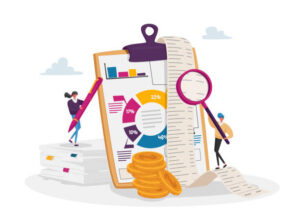“Procurement category software can accelerate reaching your goals. As I help clients with procurement savings, I notice when the forest is not seen for all the trees. It is great that procurement heroes can put out fires, but aren’t we better with an institutionalized category strategy, and fewer fires?”
You have a category strategy in your mind, perhaps also in PowerPoint. Some of your sub-categories are in a catalog, for consistent application and evaluation. As you apply category strategy, reality kicks in: stakeholders inform you late in the process (or not at all!); misclassifications and misuse of systems confound processes. All the while, pressure is on you to deliver value and savings.
Procurement category software can accelerate reaching your goals. As I help clients with procurement savings, I notice when the forest is not seen for all the trees. It is great that procurement heroes can put out fires, but aren’t we better with an institutionalized category strategy, and fewer fires?
This is the kind of work I do. I am passionate about procurement transformation and do as much of it as I can, together with going for the in-year savings that my clients also want.
Procurement has come a long way since it took the needs of businesses, as they came, to simply execute them. I no longer see order-takers as I advise clients in procurement. Instead, evolved procurement organizations are partners to their businesses, advise on sourcing options, and engage increasingly early on sourcing projects.
Ideally, category strategies are set up front, to assess and conclude once, or periodically every few years, instead of at each sourcing occasion. Even complex categories such as BPO and CAPEX can be embedded in strategy. With them, one just needs to have better foresight about the evolution of the process and build in the flexibility needed, starting with early involvement by Procurement.
Having those strategies is ideal, but I rarely see them; the typical case is that I hear about them. It happens so often that there must be significant hurdles to create and commit to them. Once I created a client-specific training for the process of how to create category strategies, but even with that it didn’t intuitively spur strategy creation work; it needed to be actively driven.
As evolved as procurement has become, with or without strategies, I also see discrepancies between how things should be and how they are. This lies in the nature of the situation and is noone in particular’s fault: in the instance, stakeholders want autonomy in their decision-making; they only rarely source and do not worry too much about how. Procurement professionals don’t always have a seat at the table, making it difficult for sourcing policies and strategies to work effectively. Exceptions undermine change work. Under these circumstances, investment in systems and processes is hard.
In the decade that has passed since I was a sourcing manager and providers were pitching their software to me (I would typically politely decline), procurement support has improved greatly. Its implementation used to be a project, and data wouldn’t be fully integrated. Traditional procurement software was similar to ERP, getting over-customized and eventually no longer invested in. The difference in usability now vs. then is that the mapping stage has now been automated; implementation is more like using a wizard. Multiple sourced data can now be made sense of using more flexible interfaces and used for decision-making, with less intervention from Excel and PowerPoint.
There is business discussion about nudging, making it easy for people to act right, rather than just instructing them and hoping for the best. This can be applied in procurement transformation as well. There is power in nudging for the right choices, giving positive marks for compliance, driving overall engagement, and leveraging positive peer pressure to give recognition for good results and right behavior. Since it is – let’s be honest – a little mundane to order consulting services again or to go buy something more for the production line or hospital, those “here is the solution for you” messages and processes really do matter. You want your category strategies integrated and well-working.
Well-working automation doesn’t mean all at once, but there are things that can be done in one go, things we need for crafting strategy well:
-
Visibility on spend directly linked to cost is one. It does not really matter that spending (as paid) is slightly different from cost in the period, but it does matter that a real effort is made to connect procurement performance to the bottom line.
-
Another no-regret move is to make the sourcing pipeline visible to sourcing professionals. The purpose of that is twofold: seeing what is coming up setting priorities and allocating efforts on the right things. A common objection is confidential budget items; they can either be put centrally in the organization, or labeled inconspicuously. Budgets – to the extent still used – inform of future spending, which is the business of procurement.
-
Finally, there is no going around the basics, having access to well-structured contract information. Contracts in place inform of renewal needs and potential for improvement, and the process of scripting new contracts benefits greatly from standardization. That is achieved through integrating contract information. When new and powerful strategy creation software meets poor data input, it is handicapped; the sometimes exciting and sometimes tedious work to get information right is worth it. You do not need all contract information, but you must have a correct vendor identification, correct dates, correct category information, and codification of any information needed for managing renewals and renegotiations.
The quality of category strategies, policies, behaviors, and business partnerships vary greatly between organizations and even corporate functions. They must fit into the business. What better way to set and live category strategy than to get all data in one place, comprehensively, where it can be looked at holistically and one can associate the different parts, pick and choose from suggested generic strategies, check the effectiveness of our buying and refine strategy. This holistic analysis, backed by hard facts, improves discussions with stakeholders, enhances sourcing, and boosts the bottom line. And it makes our jobs more fun!
…
The systems integration market is in transition and you have many new options. Software is intuitive enough to allow implementation that is and feels lean. You often do not need teams to implement. Without formal association with any specific provider (only the affinity that may come from project work), an independent consultant like myself can help navigate your options and bring your investment home. You can read about how that might be here. I am professional in procurement, not constrained by the need to sell services (although I am networked, should you need contacts). I am able to scale things up in your team.
If this article sparks your interest, I’d be delighted to connect and engage in a dialog. Contact me here.
About the Author
Highly strategic and well-versed across business functions, I act as a trusted advisor and leverage experiences gained in consulting (McKinsey, Accenture) and industry (Zurich Insurance, UBS) to solve problems and build capabilities. I am fascinated about, and work towards, well-functioning systems with clear rules of engagement and respectful and interest-based collaboration and negotiation. My work includes business plans and business cases, outsourcing transactions, procurement category strategies, risk and financial frameworks and policies, and service transformation. Lately, following clients’ needs, my work has centred on achieving savings in procurement and lowering run rate cost.
My “power” is to quickly gauge and express the essence of a situation and needs, and then stay adaptive through implementation, never giving up on either work or teams. I interact with care and have a track record of achieving change. I energize from people and care about organizational performance and team health. Being independent fits my curiosity and desire to learn. I am fluent in Swedish, English, Italian, German and French. Read more about consulting areas, and check out my work.





